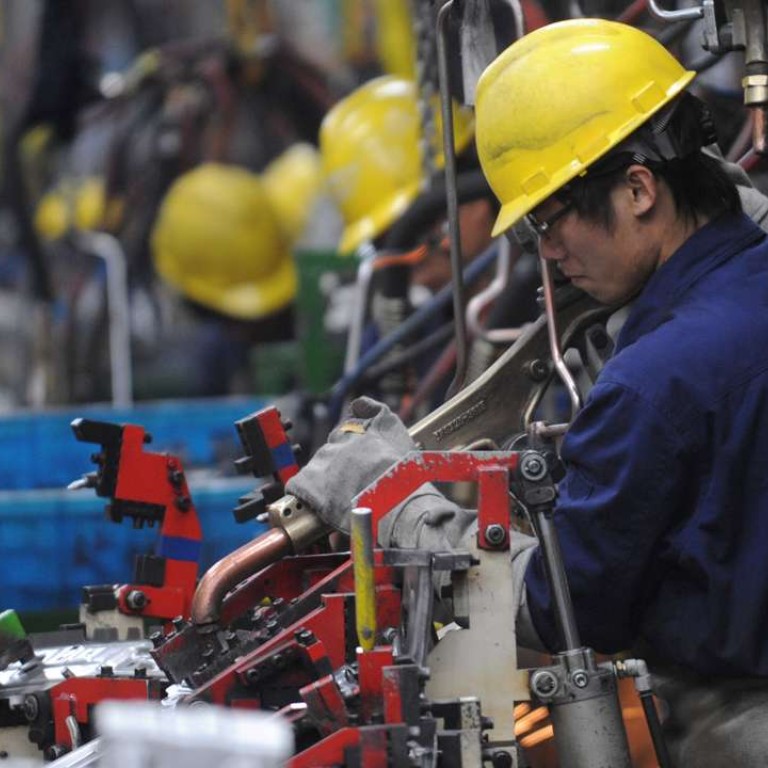
China’s softening PMI data suggests growth has peaked and capital outflows may revive
A mini rebound which underpinned economic growth in China in the second quarter looks set to lose steam while capital outflows may surge again, triggered by concerns over a wider domestic slowdown and external volatilities after Brexit, analysts said.
China’s manufacturing purchasing managers index (PMI) for June stood at 50, the line dividing improvement from deterioration, down slightly from 50.1 in May. The non-manufacturing PMI gauge rose to 53.7 from 53.1 in May, according to statistics issued by the National Bureau of Statistics last Friday.
Elliot Clarke, senior economist at Sydney-based Westpac Bank, said the numbers show that total growth in China was stagnant and external weaknesses continue to present a material risk to the outlook.
“Looking ahead, total new orders are yet to show a noticeable improvement…export orders continue to decline. Finished inventories continue to contract, but the order to inventory ratio remains near its long-run average…we have some way to go before activity improves,” he said.
Economists with UBS said in a note issued on Monday that the second quarter would mark a peak in economic rebound momentum, before gross domestic product (GDP) growth slows modestly to 6.6 per cent in the third quarter, and 6.5 per cent in the fourth quarter.

UBS said reasons for the slowdown included “the uplift from previous policy easing diminished gradually, property sales and new starts normalised to a weaker pace, and private and manufacturing investment remained lacklustre due to subdued business sentiment and overhanging excess capacity issues”.
Economists also pointed out that China’s external demand would be “adversely affected” after Britons voted to leave the European Union last month.
BofA Merrill Lynch economists shared the concern, saying that although property and infrastructure investment demand could remain firm, they were cautious on “potential headwinds especially for the manufacturing space”.
“First, weaker new orders (including export orders), declining inventories and purchases suggest that purchasing managers could be turning more cautions on the business outlook. Second, PMI for big enterprises improved notably, but that for small and medium enterprises (SMEs) dropped below 50, indicating a tougher macro environment…That is consistent with the poor reading of the Caixin PMI, which mainly surveys the SMEs,” they wrote in a noted issued on Monday.
Doubts over the macroeconomy are likely to weigh on people’s expectations for the yuan.
UBS economists said they thought capital outflow pressures likely revived in June as the exchange rate of yuan depreciated 1 per cent against the US dollar.
Capital outflows from China had eased in March and April as the US dollar weakened. However, the foreign exchange reserves continued to fall to US$3.19 trillionby the end of May, marking the lowest level since December 2011.
PMI for big enterprises improved notably, but that for small and medium enterprises dropped below 50
“We are concerned about wider capital outflow on the back of the People’s Bank of China (PBOC)’s tendency of allowing faster yuan depreciation after the Brexit,” BofA Merrill Lynch said.
“Onshore yuan against US dollar has depreciated by 1.1 per cent since the Brexit. Rising capital outflows may trigger an involuntary tightening in domestic financial conditions since the PBOC is unlikely to tolerate another credit expansion so soon. Consequently, this could hurt growth in the coming months,” it said.
Analysts expect new policy support in the next few months as China’s central government strives to deliver its growth target.
“Even if it necessitates a continued rapid rise in leverage, we expect policy support to be stepped up again should downward economic pressure from either domestic demand or exports intensify,” UBS economists said.
Meanwhile, Beijing is considering adjusting the GDP calculation methodology as the current model has “underestimated the growth pace due to insufficient tracking of new economy growth,” said Xu Xianchun, deputy head of the National Bureau of Statistics, during a forum held on Sunday.
Xu said the current methodology had come up against challenges in measuring the economic contribution made by the so-called new economy.
For example, traditional statistical investigation methods couldn’t effectively measure the economic growth generated by the sharing economy, he was quoted by Chinese media as saying.

